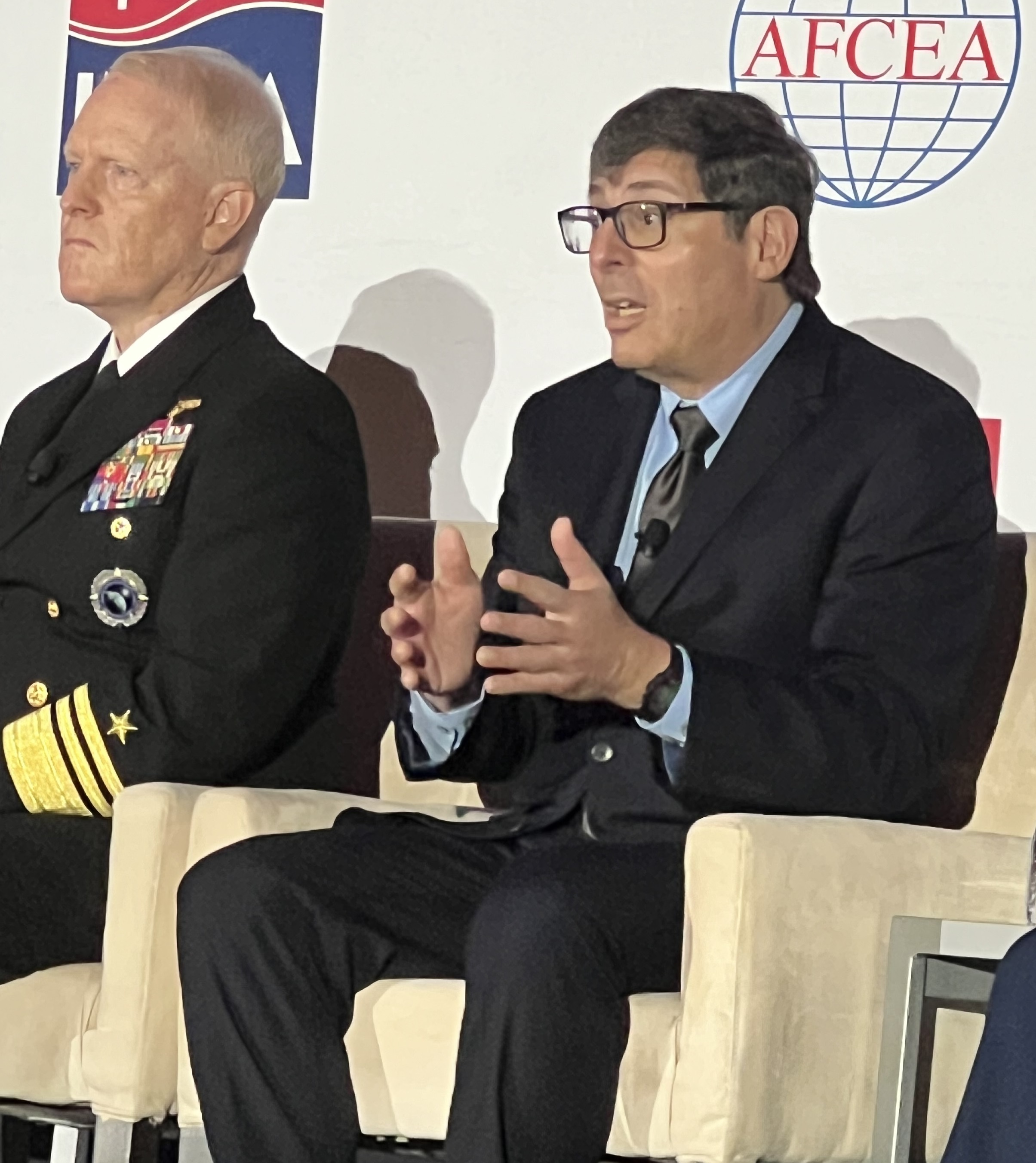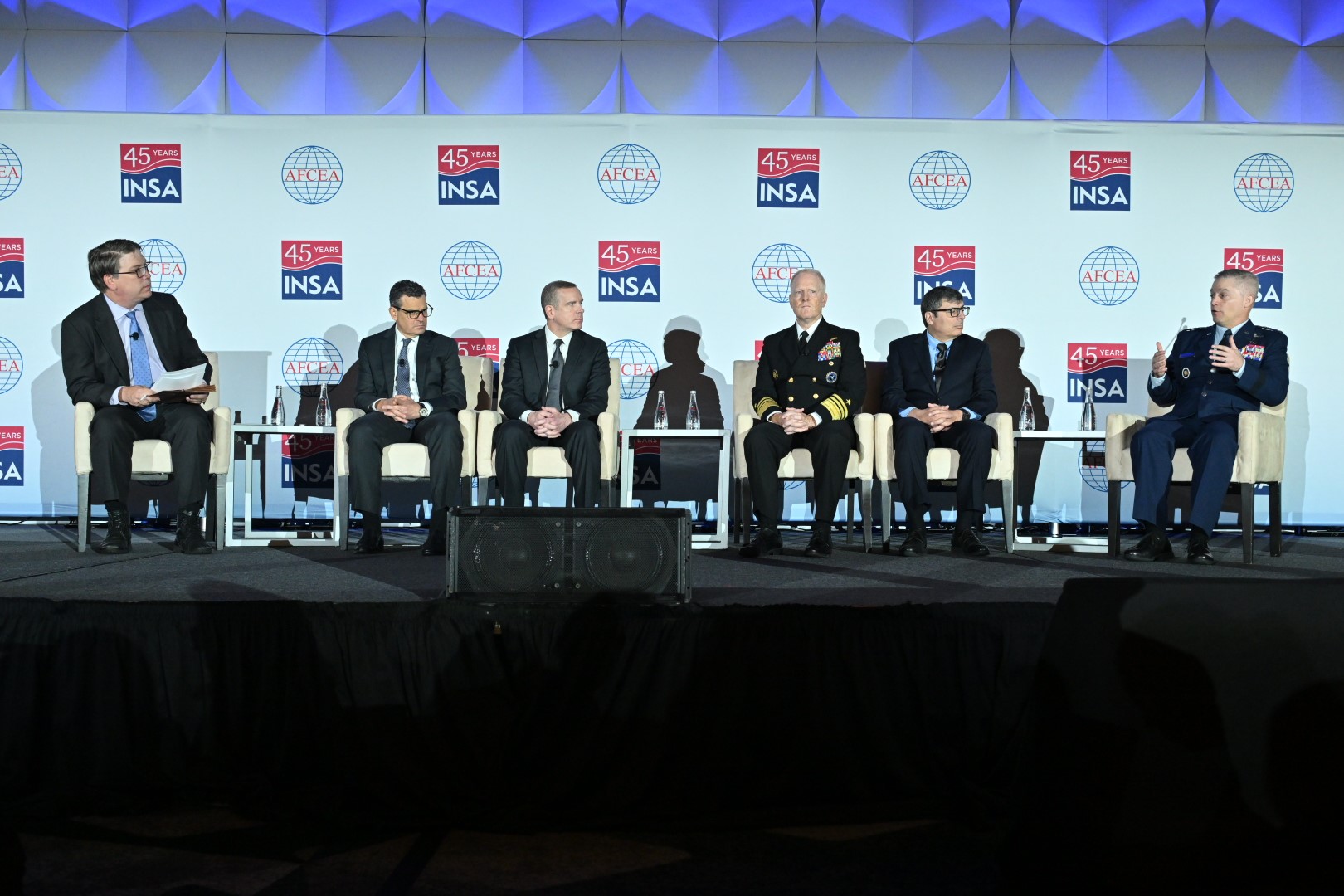Rockville, MD –
As Russia and China become more competitive and aggressive in space, the National Reconnaissance Office is expanding its overhead architecture and developing innovative capabilities to deter the threat and expand the United States’ advantage, NRO Director Chris Scolese said Wednesday at the annual INSA/AFCEA Intelligence and National Security Summit.

“From last June until the end of this calendar year, we’ll have launched more than 100 satellites,” Dr. Scolese said, describing progress on the largest government constellation in history.
Dr. Scolese said that while Russia is a very focused and capable threat to the space domain and to the United States’ intelligence, surveillance, and reconnaissance (ISR) capabilities, the threat from China is more diversified.
“Russia is pushing into more disruptive capabilities of space,” he said. “China, however, represents a different threat. They are a very capable country, technologically smart, and they're economically strong. They're developing capabilities across the spectrum of systems and they are competing with us. We have right now the strongest capability and we have the best ISR, but China is coming on strong. It represents an additional threat to what we're doing.”
Dr. Scolese’s comments came during a panel discussion with top leaders of the Intelligence Community – David Cohen, deputy director of the CIA; Paul Abbate, deputy director of the FBI; Vice Admiral Frank Whitworth, director of the National Geospatial-Intelligence Agency; and Gen. Timothy Haugh, director of the National Security Agency. The conversation was moderated by Julian Barnes, a national security reporter for the New York Times, who asked about Russia deploying a possible nuclear-powered anti-satellite weapon.
“Clearly countries that want to do us harm or compete with us recognize our reliance on space,” Dr. Scolese said. “Civil society relies on space, certainly our military and intelligence community rely on it, so they're trying to deny our ability to operate in space. Russia and China are the two most capable countries. They have clearly demonstrated that they have weapons that can take us out.”
Dr. Scolese noted that the threats come at a time the NRO is continuing to advance capabilities both on orbit and on the ground, working to become faster, more agile, and more resilient.
“So, what are we doing about it? There's a number of things -- innovating, diversifying, and becoming flexible,” he said. “That complicates the calculus of anybody who wants to do us harm.”

Dr. Scolese noted that partnerships with other government entities like the U.S. Space Force and Space Command, international allies, and the private sector are enhancing the NRO’s ability to develop innovative technologies and get critical information to customers faster than ever before.
“Commercial is playing an extremely important part,” he said. “The most obvious is using commercial launch. That has really reduced the cost of launch, which has allowed us to be far more flexible and to get more capability up there.”
A more persistent cadence of launch is one feature of the ongoing proliferation of the NRO’s overhead architecture. Having hundreds of small satellites on orbit will produce increased coverage and more timely delivery of information, while eliminating single points of failure will make the constellation more resilient. So far the NRO has launched the first two systems of its proliferated architecture, with half a dozen expected through 2024 and more expected through 2028.
The annual INSA/AFCEA Summit draws nearly 2,000 participants from government, industry, and academia. Dr. Scolese told the audience that maintaining U.S. leadership in space in not just about developing innovative technology; it’s also critical to develop an innovative workforce who will create the technology of tomorrow.
“We have an incredibly diverse team that is not only brilliant, but they also bring the diversity of different ideas,” he said. “And we’re refreshing it all the time. I think about the interns we had this year – not only were they of diverse backgrounds, with diverse technological backgrounds, they were eye-wateringly brilliant.”